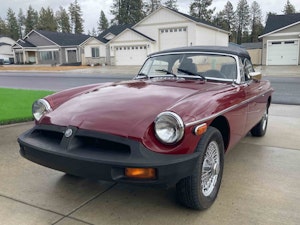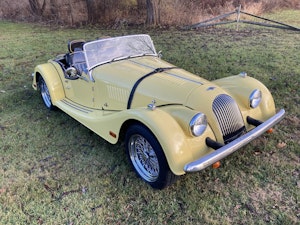Media | Articles
Why do we buy the same car over and over?
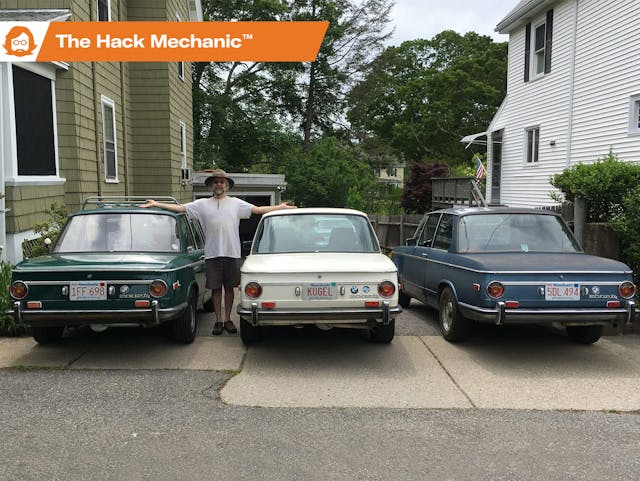
Last week, I wrote about The Great Fitchburg Automotive Exodus, which was essentially a two-step process involving multiple cars. Instead of transporting four cars to their new storage area near the Massachusetts-Connecticut border, I brought them all home, even though doing so filled the driveway beyond the bursting point.
I had several reasons for doing this—burning old gas in the tanks, wanting to do some light sorting out before a longer round of storage—but really the main reason was that I wanted to confront my own excesses. Fortunately, that confrontation was hardly the cathartic “Oh, dear Lord, what am I doing?” moment I’d feared. Instead, it was more of a Barney Stinson-like, “My cars and I are awesome.”
However, I can’t help but notice that there are now nine BMWs in my garage and driveway. Six of them are from the 1970s. And three of them are essentially the same model—the boxy little 2002 two-door sedan that established BMW’s reputation in this country.

In a Hack-Mechanic-as-Carrie-Bradshaw-Sex-And-The-City voiceover moment, I couldn’t help but wonder: In a world of automotive possibility, why do we do this? Why do we keep buying the same car over and over? Certainly, some of us are equal-opportunity automotive offenders, but boy, an awful lot of us find something we like, and wear that same automotive pair of shoes until we die.
As I wrote about in “The Rules of Attraction,” some of it is hard-wired. It may not start out that way, but when circumstances are right, we can’t help it. When we find a car whose exterior lines light up our neurons, whose interior makes us feel like we want to inhabit that real estate over and over, and whose driving experience we love, and if we have some adolescent tie-in with that car—for example, if someone we loved or admired took us for a formative drive in it—we’re all but doomed to follow that car around for the rest of our life.
Marketplace
Buy and sell classics with confidence
That was certainly the case with me and BMW 2002s. When I was 13 years old, a college student who owned a ’71 2002 lived with us for the summer, and I never got over the experience of being driven around the back roads of Amherst, Massachusetts, in that little car, which cornered faster than I ever would’ve thought possible. As soon as I graduated college and had disposable income, I bought my first 2002. Then I found another one in nicer condition with air conditioning, bought it, fixed up the first one, and sold it. That pattern continues to this day, although with the rising prices of 2002s, I’m not so much looking for “nicer” cars. Quite the opposite, really; I continue to be a bottom feeder who is attracted to cars that seem to need me to nurse them back to heath. But still, the tug from a seminal event 50 years in the rear-view mirror remains astonishingly strong.

From there, it was a relatively small step to other early 1970s BMWs like the ’73 3.0CSi two-door coupe and the big ’72 Bavaria four-door sedan. And another small step to move one generation forward to the ’79 Euro 635CSi (a.k.a. “the shark”). And another to the Z3 twins—the little Z3 roadster and the M Coupe (“the clownshoe”). And the daily driver, the 2003 530i.
Really, what’s in the driveway is just the tip of the marque-specific iceberg. Over the past 40 years, there have been 70 BMWs, and 40 have been 2002s. Most of the others were 10-to-15-year-old daily drivers used up in the churn of life.
For sure, there have been other cars, particularly in the family-hauler realm. BMW never built a minivan, so there was the Volvo 245GLT wagon, a heard of Vanagons, a more sensible Toyota Previa, and a Mazda MPV. And for stuff-hauling, beach-vacationing, and car-towing, six Suburbans came and went.
But for enthusiast vehicles, other than the BMWs, there was the ’84 Series III Alfa Spider I briefly had, the ’82 Porsche 911SC that I owned for a decade (and, sadly, sold in 2011), the ’74 Lotus Europa Twin Cam Special that I love more than is polite, and … really, that’s it.
Why?
On the surface, it’s really kind of strange. I’m a dyed-in-the-leather car person. If you cut me, I bleed brake fluid. When I go to car events, I leave puddles of drool near many marques. In fact, honestly, I prefer all-marque shows to BMW-specific events. As much as I love vintage BMWs, really, there’s only so many of them I can look at.
True, as I’ve gotten older, I’ve become extremely good at not craving things I can’t have (e.g., no sense in crying over the Series 1 E-Type that’s never going to grace my driveway), but there’s a great big automotive enthusiast ice cream store out there with many different flavors to be sampled, particularly if you don’t get hung up on only buying investment-quality, condition-4 vehicles and instead simply buy what you can afford. For years, I’ve written on these pages how Corvairs, naturally aspirated Z32 Nissan 300ZXs, second- and third-generation Alfa Spiders, and V-8-equipped ’63 and ’64 Rambler Ambassadors look sharp, have cool interiors, are great representations of their nationality and their era, and are affordable. I even wrote pieces on being smitten by a sensually-striped C3 Corvette and a hand-built, old-school, lake-bed-inspired track-T roadster. Why don’t I ever pull the trigger on any of them?
It’s actually a very good question. Here’s a nuanced answer.
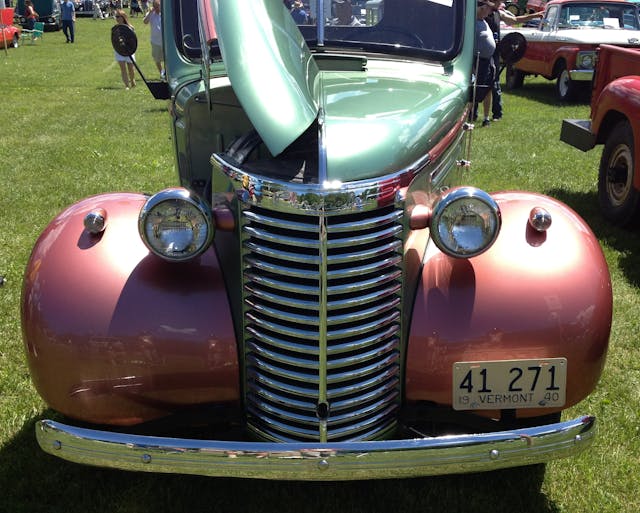
First, as my recent machinations with storage space shows quite viscerally, it’s not easy for a regular Joe or Jane of modest means to have a quantity of cars that can be termed “a collection.” When you factor in eclectic taste, the economic barrier of entry gets higher. Let’s be honest—the words “a collector with eclectic taste in cars” virtually guarantees the existence of a warehouse. I don’t have one. So, even from the narrowly viewed angle of storage, each additional car represents a non-trivial amount of logistics. I’m not sure I ever articulated this to myself, but if I’m going to go to that trouble, it had better be for a car I know I’m going to love, not just some whim in which two months later I’m tired of it.
Second, the decades of accumulated knowledge we develop on a particular make and model—where they rust, common problems, troubleshooting, user forums, vendors, where to find spare parts, aftermarket parts that are garbage, a digital rolodex of friends you can swap parts with, etc.—represents a sizeable deficit that needs to be filled if you’re going to switch models, or especially brands. My experience with the Lotus Europa demonstrates this to a T. I bought it knowing the engine was seized, but not having a clue what a rare bird a Lotus-Ford Twin Cam engine is. That inexperience caused the car to sit in my garage for five years while I figured out how to cost-effectively rebuild the engine. Now that it’s running, I adore the car, but it was a real wake-up call to the risks involved in buying something you’re not familiar with.
It’s similar to the reason that, once you and your significant other find a great vacation spot, you often wind up going back to it again and again. You know what to expect. You know where the great beaches are and which restaurant has the best pizza. Repeating a positive experience is simply an efficient way of having a good time. When you’re young, you’re repulsed by this idea, but the older you get, the more it makes sense.

Third, there’s often more variety than you might think in owning multiple versions of the same car. The three BMW 2002s I currently own are completely different animals. I purchased the ’73, ostensibly the nicest of the bunch, from its original owner. It has 49,000 miles on it and is such an intact survivor that it’s the only car I’ve ever owned where I feel like I’m a caretaker and my responsibility is simply to keep it as the original unrestored wonder that it is. The ’72 2002tii has the mechanical Kugelfischer injection system that winds up in an elegant and intoxicating manner when I nail it. It’s a well-worn example, so I’m not afraid to road-trip it (I’m about to drive it 3100 miles round-trip to a BMW 2002 event in Arkansas). The ’75 2002 is a car I moved back with me when my wife and I returned from Austin in 1984. I set it up as a track vehicle with dual Weber 40DCOEs, hot cam, 10:1 pistons, and a very stiff suspension, then sold it to a friend of mine in 1988 and bought it back a few years ago. It is heavily laden with patina, wouldn’t bat a headlight if a brick hit the hood, and absolutely roars when you mash the gas. When I did have two nearly identical cars a few years back (two 1972 2002tiis), I wound up selling one of them, as the space logistics were becoming unworkable, and I had to admit that owning two cars that were so similar didn’t make a lot of sense.


Fourth, we all instinctively know who our people are. For the 40 years I’ve been around vintage BMWs and their owners, I never cease to be amazed at what a great group of folks it is. When I went to my first Lotus event with my beat-up Europa, I instantly knew that I was around my people. Friendly. Earthy. Scrappy. Helpful. And none of them were talking about the latest values on Bring a Trailer. Will I have that same reaction if I buy a Corvair or a ’63 Ambassador and go to events? I don’t know.
Lastly, when I look at stepping outside my comfort zone, I often come back to the same question: What would I use the car for? I know how I use my vintage BMWs and my Lotus. I pleasure-drive them on the twisty roads west of Boston. I go to nearby events, some of which are informal cars and coffee meets, some more formal ones run by clubs like the BMW Car Club of America. I go on day drives organized by the Nor’East 02ers (whose motto is the delightfully accommodating “If you can drive it, you’re in!”). And I distance-drive the cars 2000–3000 miles to vintage BMW events where folks I see once a year have become like family. The BMWs and the Lotus are all great cars to drive. The small, light, nimble, quick-handling cars excel on the pleasure and day drives; the larger ones really shine on the 750-miles-a-day hauls. I flirted with selling the 635CSi a few years back because it’s a bit ponderous around town, but when I took it on another road trip, I was in love again—I was reminded what the car is for.
In contrast, if I bought, say, a ’63 Rambler Ambassador 990, or a Corvair, or a little hot rod like that track-T roadster, what would I actually do with it? Would I use it as a vector into a larger set of social activities as I’ve done with the BMWs, and to a lesser extent the Lotus? Would I actually road-trip it thousands of miles? Or would I only use it to occasionally buy milk on a Sunday morning and to go to cars and coffee events a couple of times a year? And if so, is that enough to justify the time, the space, and the expense? It’s a question that seems to perpetually stop me from venturing too far outside my lane.
Now, having said that, I need to cut myself some slack, as five years ago I stepped completely outside my comfort zone and bought the 1996 Winnebago Rialta, the 21-foot RV that’s a VW Eurovan with a Winnebago camper body on it. I had to do all the things I described above—dive into user forums, find vendors, learn about RV stuff (the “black water tank,” I mean, ick), trouble-shoot an unfamiliar vehicle when it died, etc. However, all of that made sense precisely because it was abundantly clear what the vehicle was for. Although my wife and I haven’t used it for a big multi-week road trip yet, the fact that we spend three or four days at a campground near the beach several times a summer guarantees it a space in the driveway.
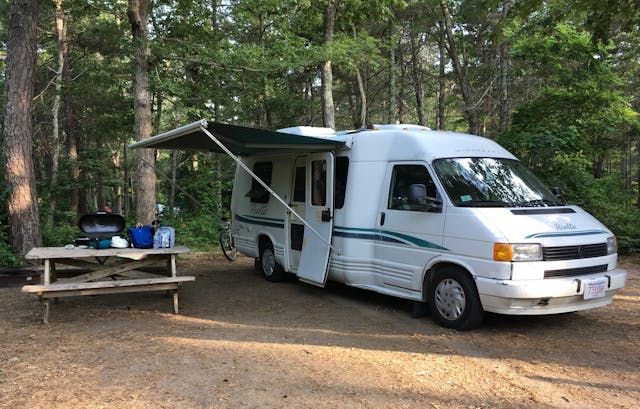
I’m not trying to convince you to either break out of your comfort zone or to stay in it. I’m just saying that, when you think about it, it’s understandable why we stay with that we love. What you do with that information is up to you. Me? The fact that the 40-year-old photo above shows my first and second BMW 2002 and the woman I’m still married to probably tells you all you need to know about which way I lean on the question.
***
Rob Siegel’s newest book, The Best of the Hack MechanicTM: 35 years of hacks, kluges, and assorted automotive mayhem, is available on Amazon. His other seven books are available here, or you can order personally inscribed copies through his website, www.robsiegel.com.






